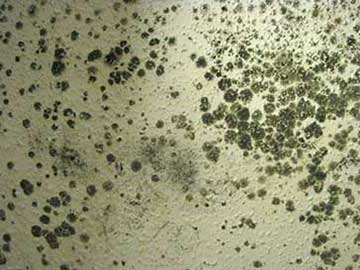Mould and Mildew
How to Get Rid Of Mould and Mildew
Mold and Mildew are common in houses across the world, they cause health hazards and damage to clothes, buildings, paper and wood.
What causes mildew and mould (or mold), what is the difference between them and what are the health hazards that they pose?
What steps can we take to prevent them from growing and how to remove them?

The Difference Between Mold and Mildew
Mould (or mold) is a common problem in houses across the world and especially in the tropics.
When we talk of mould we should also think mildew. Mould and Mildew are fungi, they grow from spores, they feed on cellulose and they damage materials such as wood, paper, cardboard, cotton, rayon and leather. They need moisture and they like warmth and shade.
There are two types of mildew. Powdery Mildew which starts white and turns to yellow, brown or black and Downy Mildew which starts yellow and turns brown.
Moulds are different and can be more colourful than bogan vomit after 3 pizzas and two crates of Bintang, they come in red, blue, yellow, green, brown, grey, black or white and they grow thicker looking “lumpy” or even fluffy. There are thousands of types of moulds and, while some can be deadly poisonous, others can be useful, they make our cheese blue and gave us penicillin, the first antibiotic.
Dangers
Mildew is not a serious health hazard however it can cause headaches, difficulty breathing, sore throats and coughing. Mildew causes damage to plants and crops.
Moulds can be far more serious, some produce mycotoxins. In addition to the headaches and respiratory issues caused by mildew, different strains of mould can cause sneezing, watery and itchy eyes, depression, forgetfulness, rashes, allergic reactions, asthma, migraines, severe tiredness, inflammation of the joints and pneumonia. Moulds can cause structural damage to homes, particularly wood rot and damage to plasterboard, wallpaper, curtains, tablecloths, bedlinen, carpets and, of course clothes in wardrobes.
Danger to health comes from inhaling microscopic airborne reproductive spores.
How to get rid of mould and mildew
Clean off the mould and/or mildew then mix half a cup of bleach in 2 litres of water and use the solution to scrub the affected area, let it dry then repeat a further two times. Bleach is nasty stuff so use rubber gloves, ventilate the area and use face masks. Do not get bleach on your skin or in your eyes.

How to avoid mould and mildew in your home
Spores float around in the air all the time so if you already have some cellulose around, a bit of humidity can cause the growth of mildew or mould.
The most effective way of preventing the growth of mould is to reduce the humidity. You can do this in three ways:
1 Keep your house dry.
- Bathrooms, kitchens and laundries are wet areas, keep them dry and well ventilated with doors to separate them from living areas.
- Stop roof leaks, damp walls and rising damp through walls and floors.
- Ventilate rooms after the floors have been mopped.
2 Use air conditioners or dehumidifiers.
- Air conditioners are very effective at lowering humidity levels, however, it is difficult for an air conditioner to get your room much below a humidity of 50%. They are expensive to run.
- Dehumidifiers (if you can find one) very effectively reduce humidity and are commonly used in places like Hong Kong.
- Do NOT use evaporative air coolers, they increase the level of humidity in the air.
3 Ventilation.
Ventilation costs nothing and very effectively reduces the incidence of mildew and mould. Air flowing over wet surfaces evaporates moisture which is carried away in the draft, it is effective even if the air is itself is quite humid.
- Have effective ventilation and air circulation incorporated into your house design.
- Regularly open your house windows and doors to let drafts blow through.
- Leave your wardrobe door open from time to time and hang the clothes with spaces between them.
- Install ceiling fans.
- Install exhaust fans.
Finally do not apply paint to mouldy surfaces, it will not stick and is likely to peel. Remove the mould and dry the surfaces before painting. Use a good quality paint with an anti fungal additive.
Phil Wilson
Copyright © Phil Wilson October 2018
This article, or any part of it, cannot be copied or reproduced without permission from the copyright owner.
